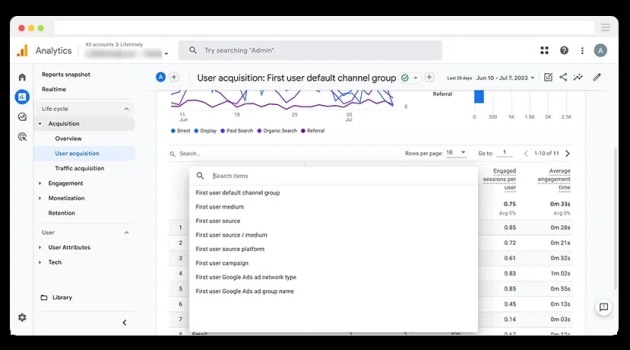
Aaron Beashel, co-founder Attributer
If you're a marketer, chances are you're using platforms like Google Ads, Facebook Ads, or Linkedin Ads to drive business growth. However, the accuracy of your tracking data is about to take a hit with the introduction of iOS 17's Link Tracking Protection feature. The update is due to land next month and in true Apple fashion, the company has been rather tight-lipped on what it actually means for marketers - so the team here at Attributer used the beta version to run a few tests to help you prepare for these updates.
Before we get to the results, let’s look at what Link Tracking Protection actually is.
When you advertise on ad networks like Google Ads or Facebook Ads, they ask you to place a snippet of code on your website so they can track how many visits and conversions you get from your ads.
But what you don’t see is that when someone clicks on one of your ads, the ad network (I.e. Google Ads) places a unique ID (known as the click ID) in the URL they send people to.
So if you were sending someone to olmosoftware.com from your Google Ads, they would actually get sent to olmosoftware.com?gclid=123456789
The snippet of code you placed on your website then reads this data and uses it to help determine which campaign, ad group, ad, etc the visitor clicked, and then if they convert (by making a purchase or filling out a form) it uses this to track conversions and sends the data back to the reporting tools in the ad platform so you can see how many conversions you got.
With Apple’s new Link Tracking Protection feature, these little click IDs that Google and Facebook put behind each click get removed before the visitor lands on your site.
This means that those little snippets of code that you placed on your site to track conversions won’t actually know where that particular visitor came from, and so their ability to track conversions and attribute them back to individual campaigns and ads will be significantly hindered, ultimately meaning the reports they provide you will be less accurate.
This is a problem because if you can’t accurately track the performance of your advertising spend, you won’t actually know which campaigns are delivering leads or customers. And, in a time where budgets are tightening, extending your runway and ensuring your precious marketing budget is working hard for you (or your clients), is more important than ever.
So now you know what Link Tracking Protection actually does, here’s what you need to do to prepare:
Here at Attributer, we downloaded the beta version of iOS17 and ran a series of tests to see what click IDs get blocked and which one’s still make it through. As you can see from the table below, click IDs from all the major search engines and social media ad networks get blocked. UTM parameters, on the other hand, do not get blocked.
So, how can you ensure accurate analytics in this privacy-led world?
It's time to stop relying solely on the built-in reporting tools of ad platforms, as their effectiveness has been waning due to various changes, including the blocking of third-party cookies for some time now. Instead, you should start using UTM parameters for each of your ads.
UTM parameters are additional pieces of text added to the end of your campaign URLs, which inform analytics tools about the visitor's origin. For example, a URL might look like this: "yourwebsite.com?utm_medium=paidsearch&utm_source=google&utm_campaign=brand-campaign", indicating that the visitor came from a paid search ad on Google as part of your brand campaign.
Then, instead of relying on the built-in reporting tools of the ad platform, rely on analytics tools that can capture and interpret these UTM parameters and tell you how many visitors, conversions, etc you got from people who came from these links.
Luckily, the analytics tool you or your clients are currently using can likely do this. For instance, the User Acquisition report in Google Analytics 4 can tell you how many visitors you got from each campaign, how many conversions, the conversion rate, etc.
The bottom line, if you rely solely on the reporting within ad networks to understand your ad campaign's performance, Apple's Link Tracking Protection will reduce the accuracy of those reports. To address this, start adding UTM parameters behind your ads and utilise tools like Google Analytics to get more accurate reporting on the number of visitors and customers driven by your various ad campaigns.




